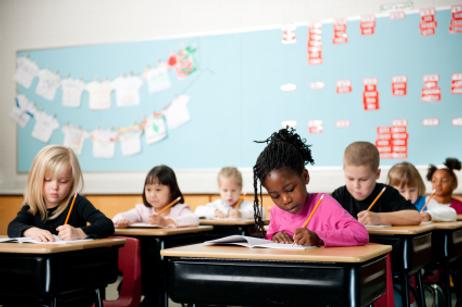Charter schools have been touted as one of the solutions to a failing school system, but not everyone believes charter schools are the best way to reform public schools. Test scores offer little assistance in this area since numbers can often be manipulated to support either side of the aisle. As these alternatives to traditional public schools celebrate their 20-year anniversary, can we know definitively if they are making the grade? It may depend on who you talk to and which school you are talking about.
The Growth of Charter Schools
No matter what educators, parents, and lawmakers might think of charter schools, one thing remains crystal clear: the number of charter schools nationwide has been slowly and steadily growing over the past 20 years. The Huffington Post reports that there are now around 5,600 charter schools around the country, attended by more than two million students. In states like Michigan, caps have been removed, allowing for the exponential growth of charter schools in that state as a multitude of charter operators have moved in to take advantage of more liberal charter authorization laws.
According to the Detroit Free Press, Michigan began the new school year with 31 new charter schools and a 32nd in the works. Eighteen of those schools are in the Detroit area. Those numbers represent the largest charter school growth in a single year since 1990. Currently, the state has 277 charter schools operating, with three-fourths operated by for-profit companies.
This video from CNN looks at public and charter schools in New Orleans, ten years after Hurricane Katrina slammed into the city.
Are They Working?
With charter school growth booming, the next question to ask is whether these schools are fulfilling their promises to bring public education to the next level. However, the answers are not always clear. For example, Michigan charter school growth is being carefully monitored by Education Trust-Midwest, a non-profit organization responsible for education policy and research. According to the Detroit Free Press, this organization discovered that many of the charter schools in Michigan are currently being operated by companies with a poor track record of academic success.
The organization determined that eight of the new charter schools in the state met their standards for academic quality, while six are operated by companies that don’t make the standards. Operators of another 16 schools had not been in business long enough to provide sufficient data to track their success. What this data indicates is that operators of charter schools in Michigan do not have to prove they know how to run a school before they are allowed to open one in the state – a point that concerns many educators and lawmakers.
This video talks about how a focus on the strengths of individual students and cultivating growth mindsets can help in schools with lots of already high-achieving students.
“If you want good schools, you don’t invest taxpayer dollars into the expansion of failing school operators,” Amber Arellano, executive director of Education Trust-Midwest, told the Detroit Free Press. Arellano added that struggling schools should be given the resources to turn around before additional school openings are allowed.
What’s Happening in Pennsylvania?
Pennsylvania is another state that has seen significant growth of charter schools in recent years. According to the Daily Times, around half of the students living in the Chester Upland area attend a charter school, which totals more than 3,000 students in that region alone. The charter schools in Chester Upland have been highly regarded as institutions that provide more personalized instruction in a wide range of delivery styles.
One charter school in the area, Widener Partnership Charter School, recently underwent a major expansion to add grades six through eight, due to high parental demand. The school spent more than $4.6 million to construct a 28,000-square-foot wing to accommodate the additional grades. A new addition to the area, Chester Charter School for the Arts, joins the charter community, providing a curriculum that currently runs through sixth grade and incorporates the arts into every subject. Currently, the school has 325 students enrolled.
While the Pennsylvania charter schools perform fairly well, their standardized test scores weren’t much better than the rest of the public schools in the area. For example, 59 percent of students at Widener performed proficient or better on math examinations last year, while more than 50 percent performed similarly at the two elementary schools nearby. While the other two schools had more students perform below the proficient level, they also had more students test as advanced in their math skills.
Reading followed a similar pattern. Most of the schools had 50 percent or more of their students perform proficient or better on reading examinations. Once again, the traditional public school had more students who tested advanced in reading but also had more students test below the proficient level.
Oversight of Charter Schools
While test scores may not paint a complete comparison between charter schools and traditional public schools, other factors may be analyzed as well. Proponents of charter schools say benefits include personalized education that allows students to advance at their own pace and instructional styles that may reach students that don’t perform well in a traditional classroom. While these benefits may not always translate well in standardized test scores, they do provide multiple benefits to students.
Others say that there is simply not enough oversight into charter schools, which means that some schools could be underperforming for a significant amount of time while remaining under the radar. For example, Michigan currently holds charter schools to less rigorous standards than other public schools in the state, which means accountability and consequences for poor performance are too slow in coming.
As charter schools celebrate their 20th birthday, the debate over whether these schools provide significant benefits continues. With more charter schools opening every day, it appears that better methods of measurement are required to determine whether this model provides the biggest bang for the education buck.
Questions. Contact us on Facebook. @publicschoolreview













